August is a bastard.
Hot. Dry. Blazing.
Deadly. If you’re lucky, August
will break your will, steal what little hope you have left and leave you
dejected, hoping and praying for September or, better yet, October. If you’re unlucky, perhaps a bit too slow, a
bit too tired, a bit too inexperienced or careless, or wearing the wrong kind
of boots, that bastard August will kill you.
If you’re really unlucky, August will wipe out any vestige that you even
existed.
August 21, 2013 marks the 76th anniversary of the
blow up in Blackwater Creek, a fiery August conflagration that took the lives
of 15 firefighters, most of them young Civilian Conservation Corps enrollees
who battled wildfire on a rugged mountain slope hundreds of miles from their
Texas homes. I have posted more than one
article related to the events that occurred in the Shoshone National Forest
that blazing hot August afternoon and yet thoughts of that hot, smoky,
fire-filled afternoon always come back to me when this bastard month rolls
around and I begin to feel it’s too hot for my own good and then just as
quickly, I remember that it isn’t likely ever going to be too hot where I am,
compared to some panicky boys on a steep mountainside far from home in 1937.
Particularly heartbreaking is the fact that, while we know
very little about the men who died fighting the Blackwater Fire, we know virtually
nothing whatsoever of the CCC enrollees whose names filled the bulk of that
tragic headcount in 1937. Of the dead
men who were variously in charge of the fire suppression work at Blackwater we
know that one (Alfred G. Clayton) was born in Brooklyn, New York in 1892 and
that he was considered to be a ranger of the “old school” and that he was an
accomplished artist and writer. We know
that another (21-year-old Rex A. Hale) was originally from Afton, Wyoming, that
he worked his way of from CCC enrollee to a full-time Forest Service position
as Junior Assistant to Technician and that he left behind a wife and infant
daughter. We know that another of the
leaders who perished on the Blackwater Fire (Paul E. Tyrrell) was a graduate of
the University of California’s school of forestry, that he became a Junior
Forester in February 1937 and that he died as a result of burns he suffered
while trying to protect others during the fire.
Finally we know that one of those in charge of firefighting crews that
day at Blackwater Creek (James T. Saban) had struggled with personal demons
that had, in the past, forced him to leave work in forestry for a time and that
he had only been back working in the woods professionally for about 3 weeks
when the Blackwater blow up took his life.
Ranger Clayton and the men who were trapped in the gulch
probably didn’t have a good deal of time in which to consider their impending
fate. A mortally injured enrollee, Roy
Bevens, was found within 60 feet of Ranger Clayton, Foreman Saban, Junior Assistant
to Technician Hale and enrollees Gerdes, Griffith, Mayabb and Rogers. Bevens pointed out the location of the
fatality site in the gulch and reportedly expressed his thanks to God for
having survived, but he would later die from his burns.
As for the group of men with Ranger Post, the fire and the
terrain provided time to weigh options, to take action, to pray and to panic,
but there wasn’t evidently much time. In
the end, a rocky point was their last refuge as smoke enveloped them and flames
surrounded them on all sides. The group
shifted from one side of the clearing to another to avoid the heat and flames. Foremen and members of the technical services
struggled to keep order in the chaos and in some cases, literally fought with
the panicked men in order to keep them from bolting from the rocky clearing and
its scant prospects for safety from the inferno all around. Among the men trapped on the ridge with
Ranger Post that blazing, smoking fearful August afternoon were CCC enrollees
Earnest Seelke, Rubin Sherry, Clyde Allen and Herman Patzke. Seelke, Sherry, Allen and Patzke made a break
for it, along with Bureau of Public Roads employee Billy Lea. Only one would survive the effort.
The men were told to lie down, but according to Ranger
Post’s account after the tragedy, many insisted on sitting up or even standing
in order to say prayers. Ranger Post
noted later:
“Nearly all the boys grew panicky and instead of lying down
as instructed, a good many of them stood up and ran to the edge of the park,
turned and came back. Some of the boys
did not listen to any orders, instructions or cautioning and were insistent
upon standing up and saying their prayers.”
Foreman Paul Tyrrell restrained panicked enrollees at the
expense of his own safety; as he lay atop the panic stricken lads his body
created a shield that protected the boys from the heat. After the flames subsided, Foreman Paul
Tyrrell would be helped from the burn area only to succumb to pneumonia a few
days later.
For others trapped on what would later be named Post Point,
death came a bit more quickly, but only just a bit and certainly in no less a
traumatic fashion. Sam Van Arsdale, a
worker with the Bureau of Public Roads made a break for it at one point only to
retreat back into the clearing but not before seeing others make a similar less
successful break for safety. Van Arsdale
survived with burns but he recounted seeing other runners lie down in the
flames, seemingly resigned to their fate.
Van Arsdale later recounted his ordeal:
“I tried to get away from that terrible heat…I remember
there were other fellows running with me down the hill the first time. But they didn’t turn around. I guess they tried to run on through. I saw some of them just lay down in there and
let the fire burn over them.” (The Helena (Montana) Independent, August 24,
1937.)
In all likelihood, Sam Van Arsdale was witness to the death
of some who chose to make a break for it:
Bureau of Public Roads employee Billy Lea or CCC enrollees Earnest Seelke,
Rubin Sherry, Clyde Allen. History records
that only Herman Patzke survived his dash through the flames.
So here, for the first time that I am aware, are images of the four CCC enrollees who chose to make a run though the flames that blazing hot afternoon on a Wyoming mountainside 76 years ago. History seems to have forgotten them, but not quite.
 |
| CCC enrollee Clyde Allen, killed at Blackwater Creek, Wyoming. |
 |
| CCC enrollee Rubin Sherry, killed at Blackwater Creek, Wyoming |
 |
| CCC enrollee Earnest Seelke, killed at Blackwater Creek, Wyoming. |



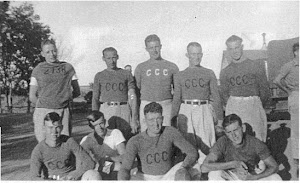

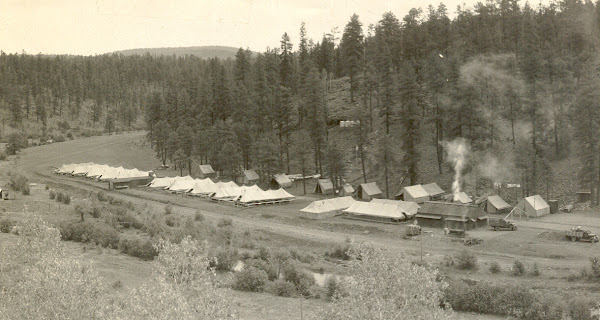

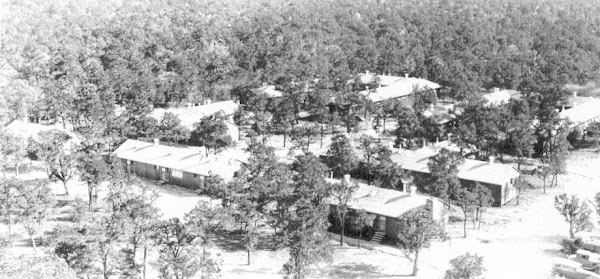



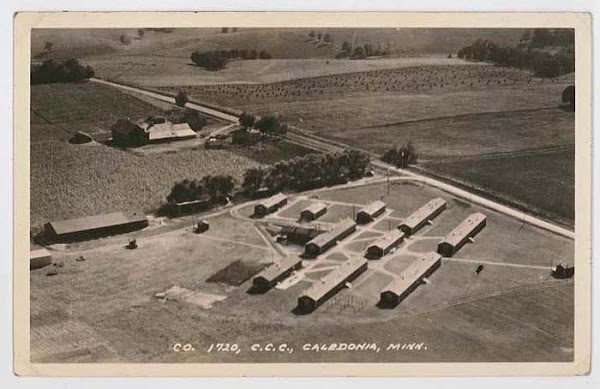
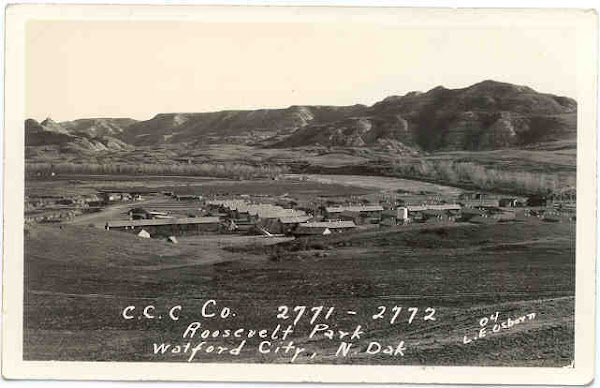
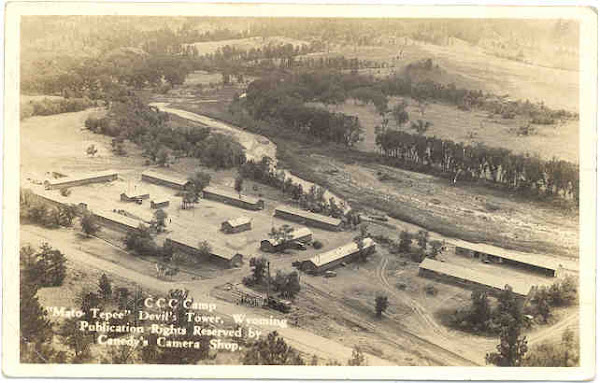
1 comment:
Today is the first day I have read recounts concerning the death of my Great Uncle Paul Tyrrell. My grandfather told me the story of his brothers death in a fire after saving lives..I did not know he died a few days later due to pneumonia. Thank you for your information contained in the article. Too bad he was not posthumously given an award for saving those 3 men's lives...they lived on and had families(hopefully). So sad to read details of his death this many years later...would some day love to see the monument in honor of that fateful day.
Post a Comment